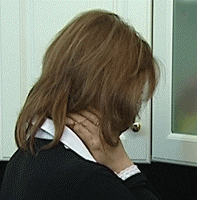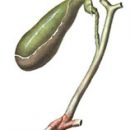Weakness, drowsiness, irritability, aggressiveness - these may be symptoms characterizing chronic hepatic insufficiency. Read more about this state in this article.
Content
What is chronic liver failure
Unlike acute, chronic liver failure increases weeks and months, and often complicated jaundice. Jaundice arises due to violation and disposal of bile in the liver and the appearance of biliary pigments (bilirubin) in the blood. The following types of jaundice are distinguished: mechanical (reason - blockage of bile ducts), hemolytic (arises due to increased destruction of blood erythrocytes) and parenchymal (due to violation of the functions of hepatic cells, bile pigments are not neutralized in the blood). Normally excess bile pigments are excreted from the body with urine and feces, some of them are neutralized by the liver.
Symptoms and diagnostics of chronic liver failure
 If a chronic disease develops for a long time, an increase in liver is noted when x-ray. In chronic liver diseases, sometimes observe the symptoms of the nervous disorder (the so-called hepatic encephalopathy): depression, weakness and drowsiness, the patient becomes irritable and aggressive. With the appropriate treatment of chronic liver diseases, hepatic coma.
If a chronic disease develops for a long time, an increase in liver is noted when x-ray. In chronic liver diseases, sometimes observe the symptoms of the nervous disorder (the so-called hepatic encephalopathy): depression, weakness and drowsiness, the patient becomes irritable and aggressive. With the appropriate treatment of chronic liver diseases, hepatic coma.
The final diagnosis is difficult to establish without a biochemical blood test, as it is important to determine the cause and degree of liver damage. It should also be determined which reason caused jaundice. Thus, mechanical jaundice due to blockage of biliary tract (for example, tumor, or stones) does not disappear during drug treatment, unlike other types of jaundice.
Diet therapy is an essential element in the treatment of patients with liver and biliary diseases. Special nutrition is assigned to support the needs of the body and create optimal conditions for the regeneration of liver cells and normal organ functions. The diet should be easily friendly and tasty, since the patient is disturbed appetite. The dietary diet differs from the usual modified protein content, fiber, vitamins and mineral substances (the fat content is limited only for patients with a violation of bile outflow).









